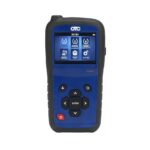Obdii Dash Gauges offer a convenient and versatile way to monitor your car’s vital signs without the need for extensive modifications. These compact devices plug directly into your car’s OBDII port, providing real-time data on various parameters such as coolant temperature, speed, RPM, and more. With the discontinuation of the popular ScanGauge E, many car enthusiasts are searching for reliable alternatives. This article will explore some of the best OBDII dash gauge options available, helping you choose the perfect one for your needs.
Factors to Consider When Choosing OBDII Dash Gauges
When selecting an OBDII dash gauge, consider factors like display size and type, the number of parameters monitored, ease of installation, durability, and price. Some gauges offer basic readouts, while others boast advanced features like customizable displays and data logging. Consider what information is most critical for you to monitor and choose a gauge that meets those needs. Size is also a key consideration, especially if you have limited space on your dashboard.
Top OBDII Dash Gauge Recommendations
While the ScanGauge 2 remains a popular choice, despite the price increase, other contenders offer compelling features and value. The UltraGauge, known for its affordability, provides a wide range of readings and a user-friendly interface. Numerous less-known brands on Amazon offer budget-friendly options, but researching reviews and ensuring their durability is crucial before purchasing.
Beyond the Basics: Advanced OBDII Gauge Options
For those seeking more than basic readings, several advanced OBDII gauges provide customizable displays, allowing you to prioritize specific data points. Some even offer performance monitoring features, useful for tracking horsepower, torque, and other performance metrics. However, these options often come with a higher price tag. If a full gauge cluster replacement is not desired, a standalone OBDII gauge strikes a balance between functionality and simplicity.
Installation and Setup of OBDII Dash Gauges
Most OBDII dash gauges are easy to install, simply plugging into the OBDII port located under the dashboard. Hardwired options offer a permanent solution, eliminating the need for Bluetooth connections and mobile apps. Once connected, the gauge automatically reads data from the vehicle’s computer, displaying it in real-time. Some gauges may require initial configuration to select specific parameters for display.
Conclusion
OBDII dash gauges offer a valuable tool for monitoring your vehicle’s performance and health. With a variety of options available, from basic readouts to advanced performance monitors, choosing the right gauge depends on your individual needs and budget. While established brands like ScanGauge and UltraGauge provide reliable performance, exploring lesser-known brands can uncover hidden gems, but always prioritize quality and user reviews. By carefully considering factors such as display, features, and durability, you can find the perfect OBDII dash gauge to keep your car running smoothly.

